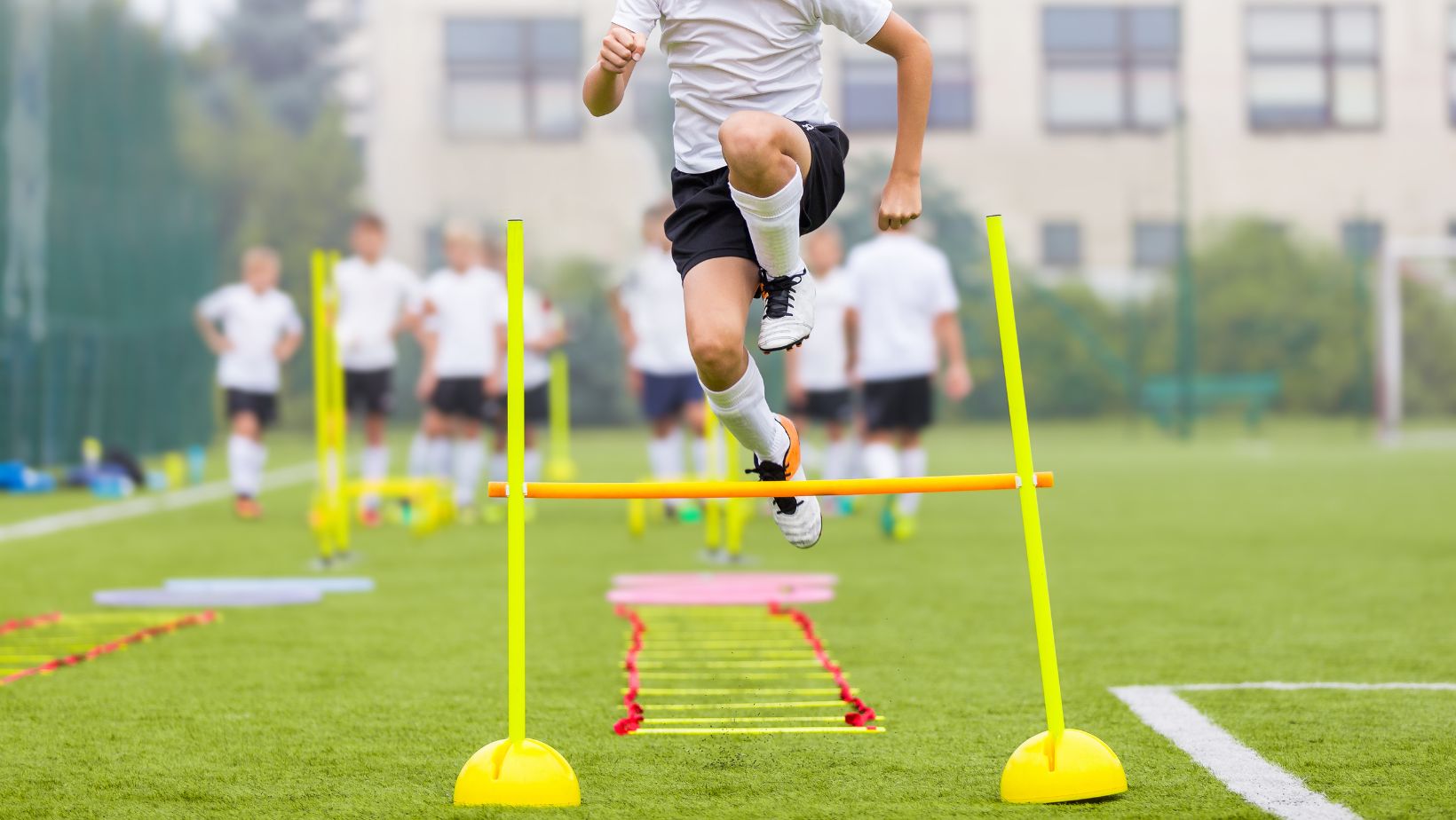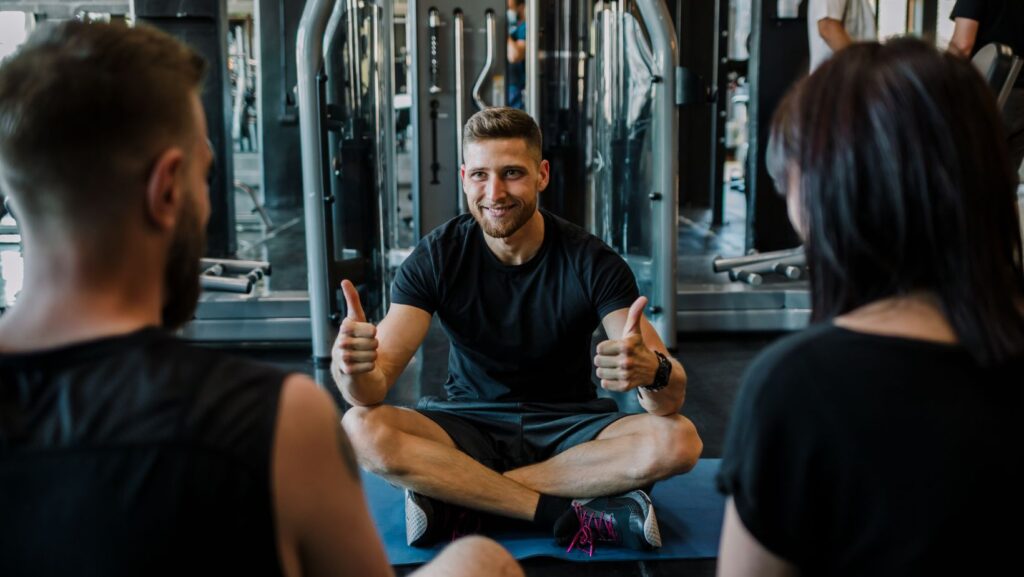Soccer Fitness Training
Soccer fitness training plays a vital role in enhancing player performance. It involves exercises targeting strength, speed, flexibility, and cardiovascular endurance, each contributing to different elements of the game. Strength exercises, like squats and lunges, improve tackling efficiency and balance.  Speed drills, such as sprints, boost acceleration, essential for quick maneuvers and recovery runs. Flexibility routines prevent injuries by promoting a full range of motion. Cardiovascular workouts, like interval runs, ensure players maintain stamina, crucial for withstanding the demands of a 90-minute match.
Speed drills, such as sprints, boost acceleration, essential for quick maneuvers and recovery runs. Flexibility routines prevent injuries by promoting a full range of motion. Cardiovascular workouts, like interval runs, ensure players maintain stamina, crucial for withstanding the demands of a 90-minute match.
Training specificity caters to soccer’s dynamic nature. Tailored programs adapt to individual player roles. For example, goalkeepers focus more on agility and reflex exercises, while midfielders prioritize endurance and quick decision-making skills. Personalized regimens allow players to exploit personal strengths and address weaknesses, ultimately improving overall performance and reducing injury risks. Soccer fitness training ensures players not only meet but exceed the physical demands of the sport.
Key Components Of Soccer Fitness
Soccer fitness involves specific components essential for optimal performance on the field. Each component contributes to a player’s ability and overall capability to handle the sport’s physical demands. Endurance is crucial for maintaining performance throughout a 90-minute match. Soccer players engage in aerobic exercises such as long-distance running to enhance cardiovascular conditioning. These routines increase stamina, allowing players to sustain high energy levels and recover quickly during breaks in play. Continuous endurance training helps reduce fatigue and improve overall game consistency.
Strength is vital for executing powerful movements and maintaining balance. Soccer players perform exercises like squats, lunges, and deadlifts to build core and lower body strength. These exercises enhance tackling efficiency and stability during physical confrontations. A robust strength foundation allows players to resist pressure from opponents, effectively control the ball, and deliver powerful shots on goal.
Agility allows players to maneuver quickly and efficiently around the field. Soccer fitness training incorporates cone drills and ladder exercises to develop footwork and reaction time. Enhanced agility helps players evade opponents, change direction swiftly, and execute precise movements in tight spaces. This component supports both offensive plays and defensive coverage, improving a player’s adaptability during matches.
Flexibility is essential for injury prevention and maintaining a full range of motion. Stretching routines and yoga practices increase muscle elasticity, allowing players to perform dynamic movements with reduced injury risks. Flexibility training aids in recovery and ensures players can handle the sport’s physical demands. Adequate flexibility contributes to a player’s ability to reach, stretch, and extend during plays efficiently.
Effective Training Techniques
Enhancing soccer fitness requires structured and systematic training methods. It’s essential for players to focus on various techniques to improve their physical performance and game readiness. Interval training is a crucial technique in soccer fitness training. It involves alternating between intense activity and short recovery periods. This approach mimics the stop-and-go nature of the game, helping players enhance their cardiovascular endurance and recover quickly between sprints. Players might perform high-intensity sprints for 30 seconds followed by a 60-second jog. This technique boosts stamina and efficiency during match play.
Strength and conditioning enhance a player’s physical capabilities on the field. Integrating exercises like squats, lunges, and deadlifts builds core, leg, and upper body strength. Stronger muscles improve tackling power, balance, and overall physical resistance against opponents. Conditioning exercises, like circuit training, focus on endurance and muscle adaptation to high-intensity efforts, ensuring that players sustain peak performance throughout the game.
Speed drills sharpen acceleration and agility, key components in soccer. These drills include cone drills, ladder exercises, and shuttle runs designed to improve footwork, change of direction, and explosive sprints. Regular speed training increases a player’s ability to react swiftly and make quick directional changes, crucial for both offense and defense maneuvers. Sprint intervals combined with technical skills training enhance overall game speed and effectiveness.
Soccer fitness training is a cornerstone of player development, bridging the gap between raw talent and peak performance. By implementing a well-rounded training regimen that targets strength, speed, agility, and endurance, players can enhance their capabilities on the field while minimizing injury risks. Tailored programs cater to individual needs, ensuring that each player can harness their strengths and address any weaknesses effectively. Coupled with proper nutrition and strategic rest, these training practices empower players to maintain optimal performance throughout the demanding soccer season. Embracing these comprehensive fitness strategies not only elevates individual performance but also contributes to a more dynamic and resilient team.

